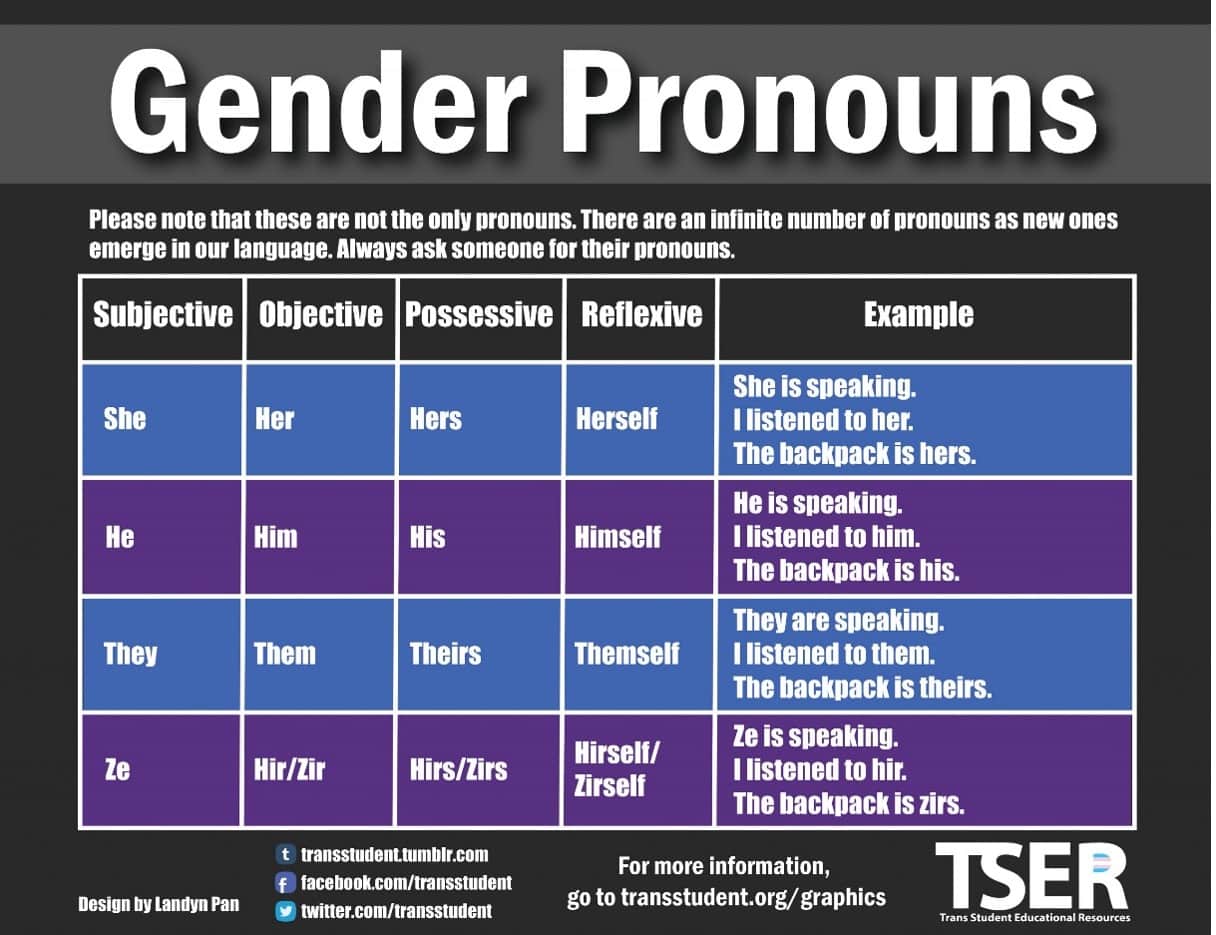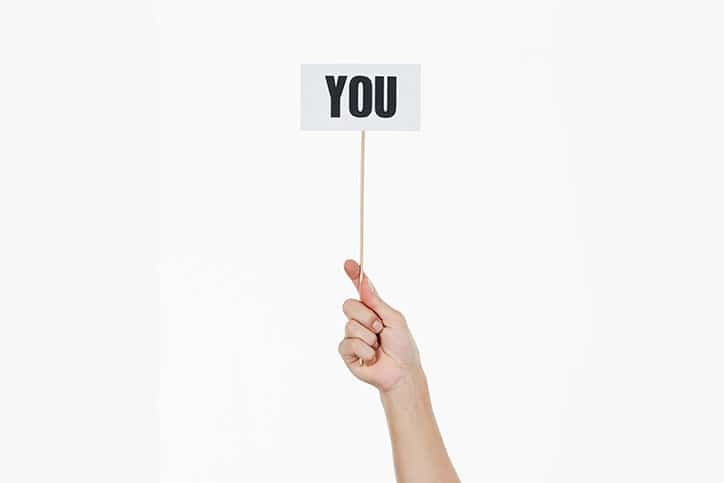What are pronouns?
Although pronouns appear to have recently emerged as a topic of interest, they have been used to reference individuals’ gender identity for centuries. While most individuals use pronouns which reflect their sex assigned at birth (SAB), up to 25% of LGBTQ+ individuals use pronouns which fall outside their SAB, and instead align with their gender identity. While sex (generally male and female) is biologically-driven, gender (boy, girl, nonbinary, etc.) refers to how an individual identifies themselves, and may not always match their SAB or physical appearance.
What pronouns are there?
The most commonly used pronouns, particularly for those who are cisgender (i.e., individuals whose gender identity matches their SAB) are she/her and he/him. However, many individuals do not identify as a girl or boy, which is often termed gender nonbinary, and they may use pronouns such as they/them. Other individuals may have been born with a SAB of male or female, but their gender identity is aligned with the opposite SAB. See below for a helpful table which shows various pronouns and how to use them in a sentence. It is important to note that this list is not exhaustive, and someone may use different pronouns not represented here.

Image copied from http://transstudent.org/graphics/pronouns101.
What should I do if I’m unsure about someone’s pronouns?
The easiest way to learn about someone’s preferred pronouns or gender identity is to ask, especially if you’re unsure which pronouns they use. It’s often helpful to model your own pronouns first:
“Hi, I’m Jill – and I use she/her pronouns. What pronouns do you use?”
You may have seen people listing their preferred pronouns in their email signatures, social media descriptions, website bios, etc. Not only does this practice make identifying someone’s preferred pronouns easier; it also normalizes the practice of stating pronouns, particularly for gender diverse individuals whose pronouns do not necessarily match their physical appearance.
Why is it important to use someone’s preferred pronouns?
By using someone’s preferred pronouns, you are honoring their gender identity and showing them respect. Research has consistently shown that LGBTQ+ individuals are at increased risk for experiencing mental health concerns, including depression and suicide. In fact, research from The Trevor Project demonstrated that 1 in 3 transgender youth reported attempting suicide in 2017. However, additional research from the organization in 2020 showed that youth who reported having their pronouns respected by most or all individuals in their lives attempted suicide at half the rate as those who did not have their pronouns respected. Although it may seem like a small effort, using correct pronouns, especially for trans and gender diverse individuals, is a simple way to help reduce negative outcomes.
What if I make a mistake?
It’s normal to make an occasional mistake when using someone’s pronouns, particularly if you’ve known them for a long time with different pronouns. If you use the wrong pronoun for someone, try to say something right away – like “I’m sorry, I meant (he/she/they/etc.).” If you recognize your mistake later on, you can apologize in private. The most important takeaway is that you make your best effort at using someone’s preferred gender pronouns.
Where can I learn more?
There are many experts and wonderful resource groups which offer support to LGBTQ+ individuals and their loved ones. While this blog offers a snapshot into pronoun facts/terminology, it is also important to learn from those with direct experience and groups which support LGBTQ+ causes. Additional support and resources are available through several respectable organizations, including the following:
- The Trevor Project: http://www.thetrevorproject.org
- Human Rights Campaign: http://www.hrc.org
- PFLAG: https://pflag.org
- Trans Youth Equality Foundation: http://www.transyouthequality.org
- Family Equality Council: http://www.familyequality.org
- Gender Spectrum: http://www.genderspectrum.org
Jilian A. O’Neill, Ph.D.
she/her/hers
Licensed Psychologist/Clinical Neuropsychologist
Oakland Neuropsychology Center



